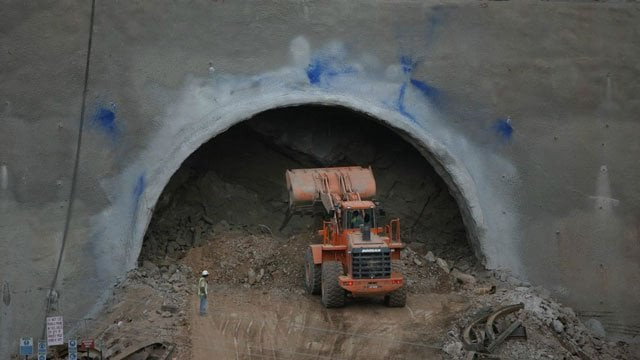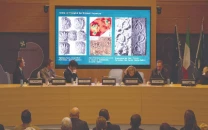India plans longest road tunnel along LoC in disputed Kashmir
Gurez tunnel, if constructed, will be of 'huge help' not only to Indian defence forces but also locals in the area

If approved, Gurez tunnel will be the longest in the country and almost double the size of Chenani-Nashri tunnel on the Jammu-Srinagar national highway in the disputed region which is expected to be completed later this year. PHOTO: REUTERS
At an estimated cost of $1.3 billion, the 18-kilometre-long road tunnel will connect Gurez town in the northern part of Indian Kashmir with the rest of the valley.
“We have submitted a proposal to the Ministry of Road Transport and Highways for construction of an 18-kilometre tunnel at Razdhan pass to connect Gurez with rest of the Valley throughout the year,” India’s official news agency PTI quoted chief engineer of the Border Road Organisation (BRO), Brigadier AK Das, as saying.
Tense Indian-held Kashmir shuts down after civilian deaths
If approved, Gurez tunnel will be the longest in the country and almost double the size of Chenani-Nashri tunnel on the Jammu-Srinagar national highway in the disputed region which is expected to be completed later this year.
Gurez, a picturesque valley in Indian Kashmir’s Bandipora district which is surrounded by snow-capped Himalayas, is a strategically important part of the disputed region both in terms of energy projects and defence. However, the valley remains cut off from the rest of Kashmir during winter season due to heavy snowfall.
India is already working on the construction of a controversial 330MW hydro-power project in the region which has been disputed by Islamabad at the Permanent Court of Arbitration, The Hague. The estimated construction cost of Kishenganga Hydro Electric Project is $687 million.
Peace dialogue: Indo-Pak progress tied to Kashmir, says PM
“A feasibility study has already been conducted for the Gurez tunnel and, if constructed, it will be of huge help not only to defence forces but also the civilian population of the area,” Das claimed. “It will improve connectivity leading to development of the area.”
Further, according to him, another proposal for the construction of three more “strategically important” tunnels in Indian Kashmir has been submitted by the BRO. “These include a 6.5-kilometre tunnel at Sadhna that will improve connectivity with the Tangdhar area (along the LoC) in Kupwara district, another at Furkian (Keran Sector) and a 3.5-km tunnel at Zamindar Gali (Macchil Sector),” he said.
However, feasibility studies will only be conducted after the projects are approved by the Union Ministry, Das said. “With a heavy presence of the Indian military in the Gurez Valley the government could exploit its tourism potential as it will provide an improved sense of security,” he added.
The Line of Control marks the de facto border between India and Pakistan in the disputed Kashmir region. Relations between the two nuclear powers have worsened significantly since 2014, with shelling across their border in Kashmir claiming dozens of lives.
In Kashmir, missing men revive fears of 'disappearances'
Since gaining independence from Britain in 1947, they have fought three wars — two of them over Kashmir. The territory is divided between the two countries but claimed in full by both. About a dozen militant groups have been fighting since 1989 either for Kashmir's independence or its merger with Pakistan.
This article originally appeared on The Economic Times.



















COMMENTS
Comments are moderated and generally will be posted if they are on-topic and not abusive.
For more information, please see our Comments FAQ